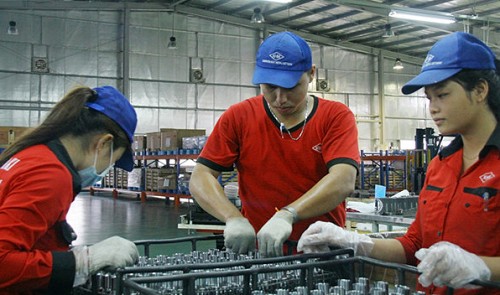Foreign firms expand production in Viet Nam
Foreign investors have pumped dozens of billions of U.S. dollars to expand or start production in Viet Nam in anticipation of business opportunities the Trans-Pacific Partnership will bring as the trade pact is due for completion in the near future.
For Nobland Vietnam Co. Ltd., an apparel company based in Ho Chi Minh City, the investment increase is intended not only to receive more orders, but to grab the chance when Viet Nam joins the TPP, according to its executive.
 |
| Kawasaki Heat Metal Vietnam employees work at the company's plant in Binh Duong Province |
The company is increasing its investment to $61 million from $43 million.
Nobland Vietnam will also recruit 2,000 new employees to expand its workforce to 10,000, according to the general director.
Meanwhile, in Binh Duong Province, Nam Phuong Textile Co. Ltd., a joint venture between Hong Kong’s Haputex Development Limited and Vietnamese Viet Huong JSC, is building a new plant to embrace the TPP.
The company began construction on the $120 million fabric making facility only 20 days after receiving an investment license in November 2014.
Also in Binh Duong, Japan’s Tomoku Group has inaugurated a $47.6 million plant at the My Phuoc 3 Industrial Park, only a year after its project was licensed.
The facility is ready to begin production by the end of this month, said general director Takashi Nara.
The Viet Nam investment is the first step in the company’s plan to expand into the ASEAN market, according to the executive.
The TPP is a proposed regional free-trade agreement aimed at eliminating tariffs and reducing non-tariff barriers that is being negotiated by 12 countries throughout the Asia-Pacific region.
The countries include Australia, Brunei, Canada, Chile, Japan, Malaysia, Mexico, New Zealand, Peru, Singapore, the United States, and Viet Nam, which collectively contribute almost half of global output and over 40% of world trade, according to the Office of the United States Trade Representative.